Creating a dedicated homeschool space transforms your child's educational journey into an engaging, organized experience. Whether you're working with a sprawling room or a cozy corner, the right design can enhance learning outcomes and foster creativity. From minimalist setups that reduce distractions to vibrant spaces that spark imagination, each homeschool room should reflect your family's unique learning style and needs. These 25 comprehensive design ideas encompass complete themes that address layout, storage, furniture, lighting, and decor as cohesive concepts. Each approach offers practical solutions for different spaces, budgets, and educational philosophies, ensuring every homeschooling family can create an inspiring environment where knowledge flourishes.
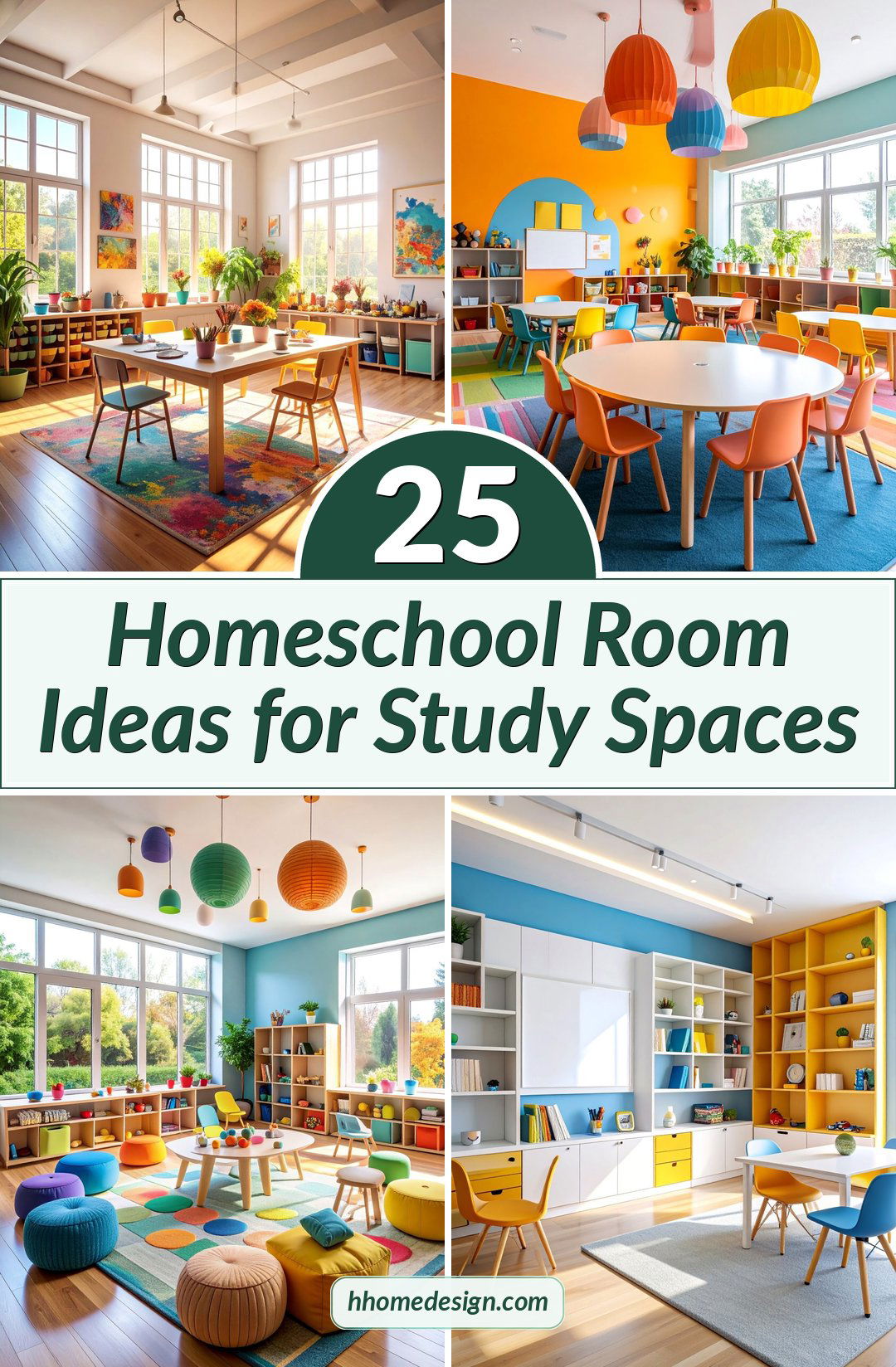
1. Modern Minimalist Learning Hub
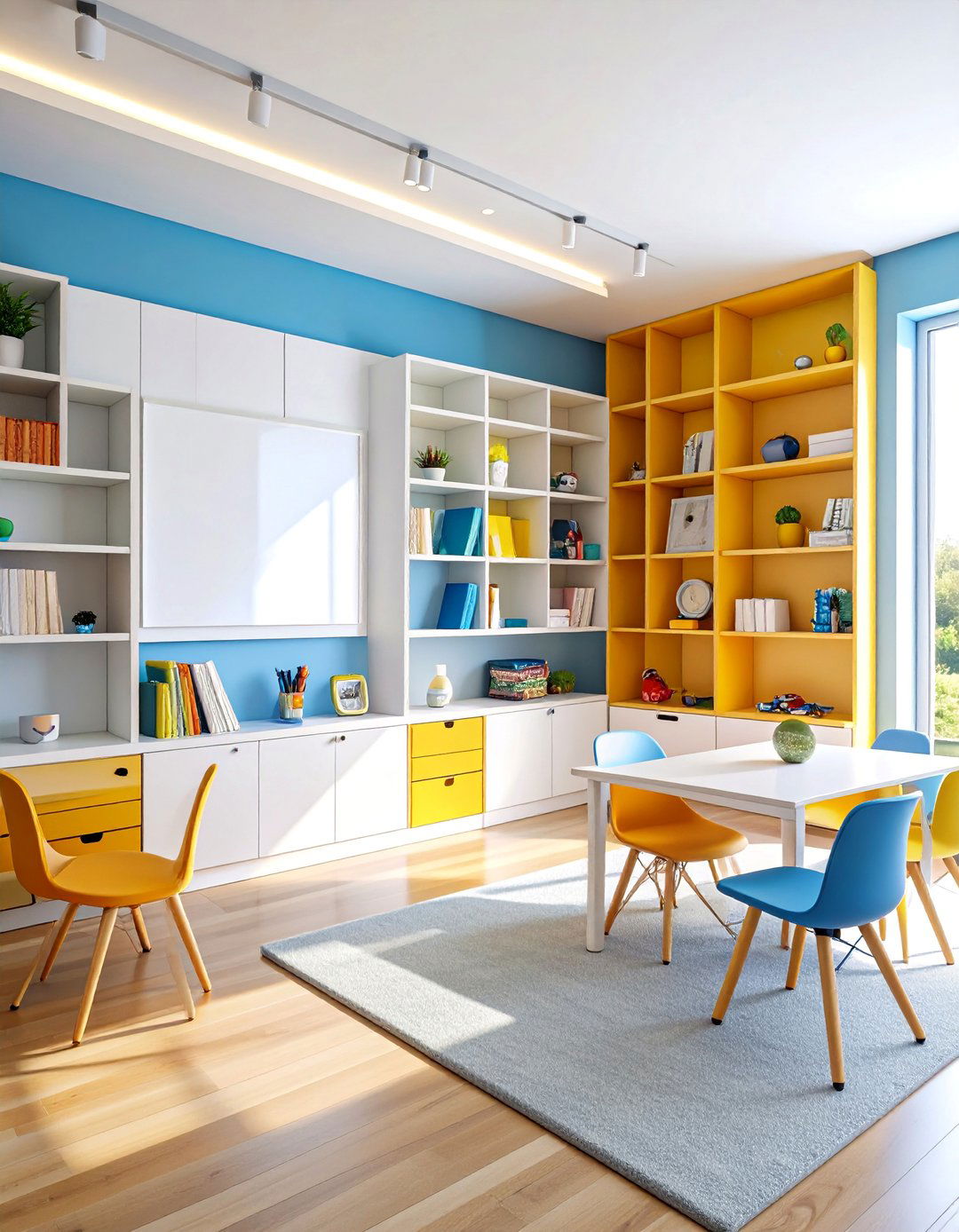
This sleek homeschool room embraces clean lines and neutral colors to create a distraction-free learning environment. White floating desks line the walls with ergonomic gray chairs providing comfortable seating. Open shelving displays neatly organized books and supplies in matching white bins, while a large whiteboard serves as the focal point for lessons. Natural wood accents warm the space through desktop organizers and picture frames. LED under-cabinet lighting ensures optimal illumination without harsh shadows. The room features polished concrete floors with a large geometric area rug defining the learning zone. This minimalist approach promotes focus and mental clarity while maintaining visual appeal.
2. Rustic Farmhouse Classroom

Transform your homeschool space with warm farmhouse charm featuring reclaimed wood elements and vintage-inspired decor. A large wooden farmhouse table serves as the central workspace, surrounded by mismatched wooden chairs painted in soft pastels. Shiplap walls provide texture while floating barn wood shelves display mason jars filled with supplies. A vintage chalkboard mounted in a distressed frame becomes both functional and decorative. Galvanized metal storage bins organize materials while maintaining the rustic aesthetic. Mason jar pendant lights provide warm ambient lighting, complemented by natural light from white linen curtains. Burlap bulletin boards showcase student work alongside inspirational quotes in vintage frames.
3. Colorful Creative Station

Design an energizing homeschool room that celebrates creativity through bold colors and interactive elements. Rainbow-colored storage cubbies line one wall, each designated for different subjects or children. A round white table sits in the center with bright blue and orange chairs that can be easily rearranged. The walls feature a large world map mural alongside colorful educational posters and alphabet cards. A dedicated art corner includes an easel, supply cart on wheels, and washable floor mats for messy projects. String lights add magical ambiance while a cozy reading nook with oversized floor pillows encourages quiet study time. This vibrant environment stimulates learning through visual excitement.
4. Flexible Multi-Purpose Learning Space

Create an adaptable homeschool environment that transforms throughout the day using modular furniture and smart storage solutions. Folding tables can be configured for group work or individual study, while stackable chairs store compactly when not needed. A large area rug defines the central learning zone, with floor cushions available for relaxed reading sessions. Rolling carts house supplies for easy transport between activities, and a Murphy desk folds down for additional workspace when required. Magnetic wall panels display schedules and student work while doubling as teaching surfaces. This flexible design accommodates various learning styles and activities within a single adaptable space.
5. Nature-Inspired Outdoor Learning Room
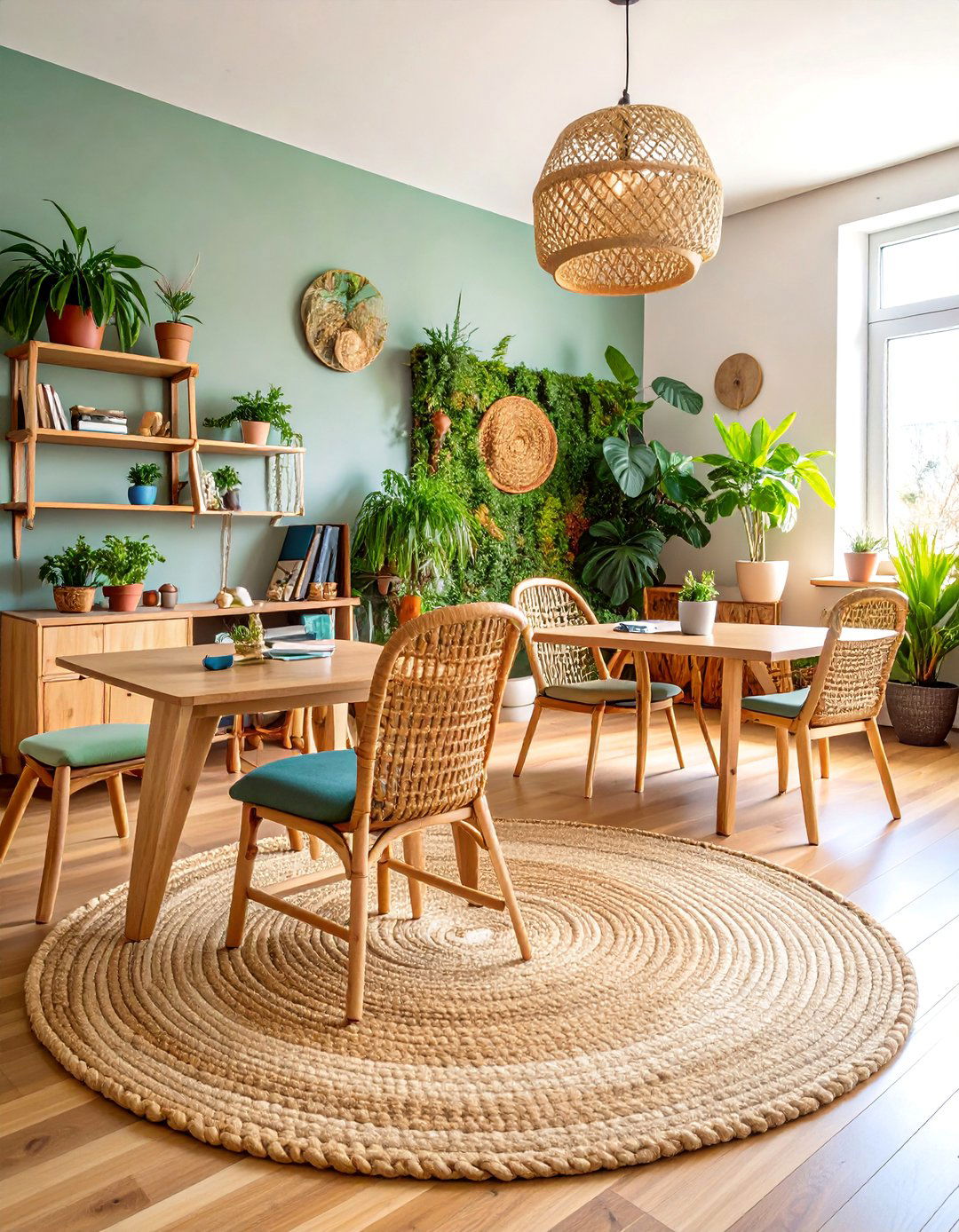
Bring the outdoors inside with a nature-themed homeschool room featuring organic materials and earth tones. Live edge wooden desks paired with woven rattan chairs create an organic workspace surrounded by potted plants and natural light. Cork boards shaped like tree trunks display seasonal learning materials and nature collections. A living wall of easy-care plants improves air quality while teaching biology concepts. Natural fiber rugs in green and brown tones anchor seating areas filled with log-shaped ottomans. Skylights or large windows maximize natural illumination, while nature sounds play softly in the background. This biophilic design connects children with nature while supporting their educational journey.
6. Traditional Classroom Setup
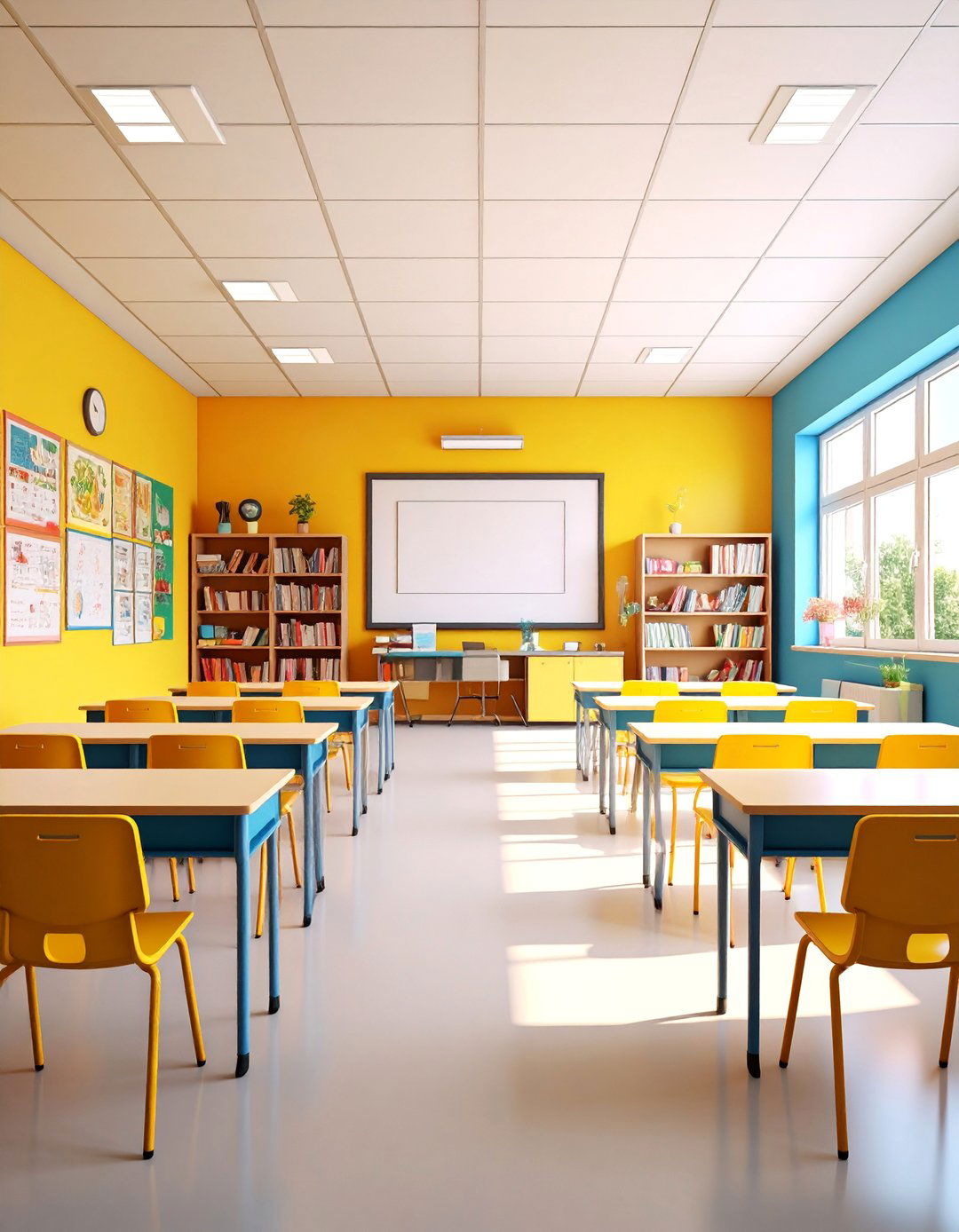
Recreate the familiar structure of a traditional classroom with organized rows and clear learning zones. Individual student desks face a large whiteboard and teaching area, with each desk featuring built-in storage compartments. A teacher's desk positioned at the front includes drawers for lesson plans and supplies. Wall-mounted alphabet strips and educational charts provide constant visual references. A classroom library corner features leveled books in labeled bins, while a quiet reading area includes comfortable floor seating. Traditional school clocks and calendars maintain routine, and a flag display reinforces civic education. This structured environment provides comfort for children transitioning from traditional school settings.
7. Cozy Reading Corner Sanctuary
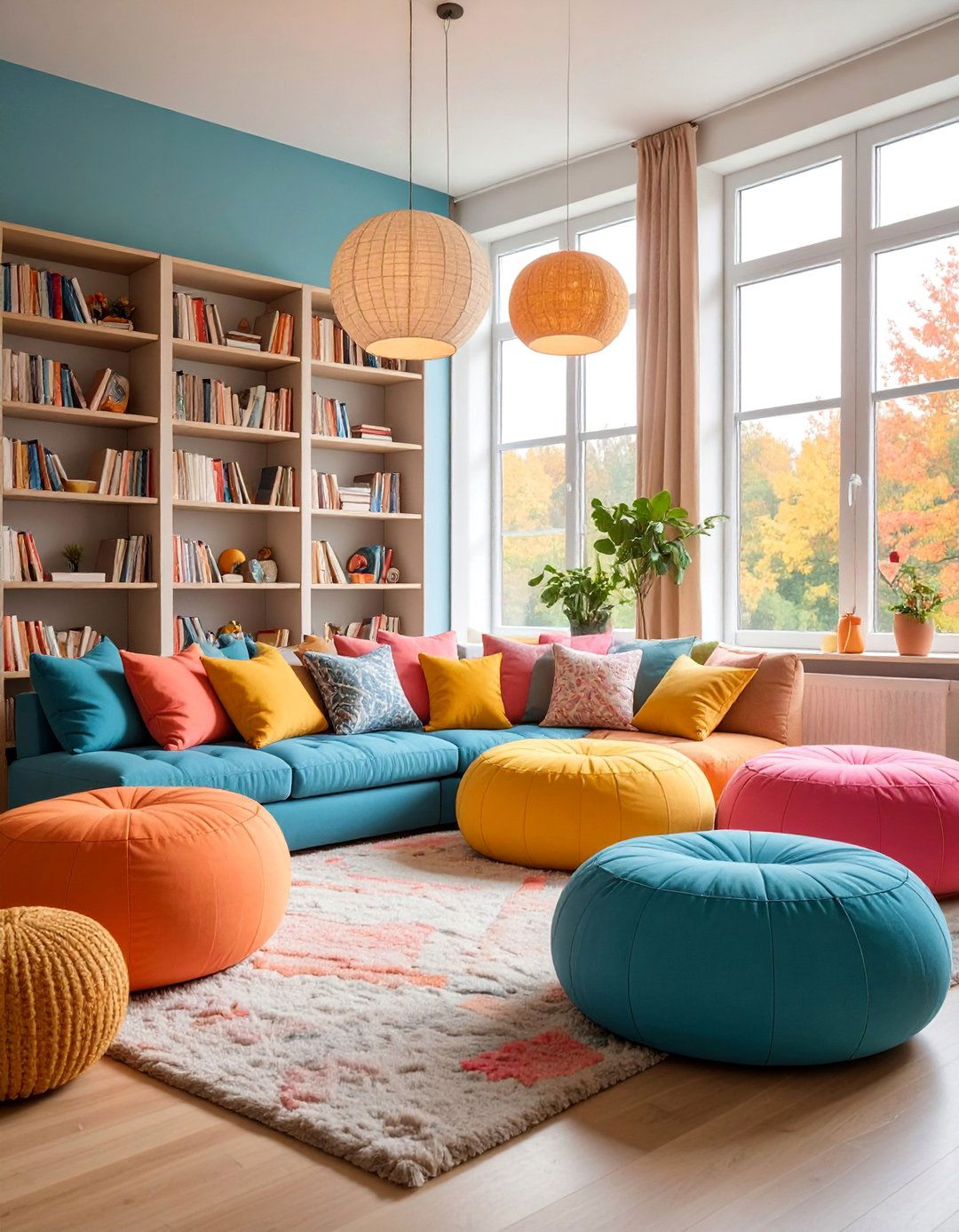
Design a homeschool room centered around literacy with multiple comfortable reading zones and extensive book storage. Built-in window seat with plush cushions creates an intimate reading nook flooded with natural light. A large sectional sofa accommodates family read-alouds while individual bean bags provide personal reading spaces. Floor-to-ceiling bookshelves organize literature by reading level and subject, with picture books displayed face-forward for easy selection. Soft area rugs define different reading zones, while warm table lamps create perfect reading light. A listening station with headphones enables audio books, and comfortable throw blankets invite extended reading sessions. This literary haven nurtures a lifelong love of reading.
8. Technology-Integrated Smart Classroom

Embrace modern learning with a tech-savvy homeschool room featuring digital tools and interactive displays. Height-adjustable desks accommodate laptops and tablets, with charging stations integrated into the workspace design. A large interactive whiteboard enables digital lessons and collaborative activities. Individual computer stations provide research capabilities while maintaining visual supervision. Cable management systems keep technology organized and safe, while adequate outlets support multiple devices. Ergonomic seating promotes proper posture during screen time, and adjustable lighting reduces eye strain. Cloud-based storage solutions ensure easy access to digital resources. This contemporary setup prepares students for the digital demands of modern education and future careers.
9. Montessori-Inspired Learning Environment

Create a child-centered homeschool room following Montessori principles with low, accessible furniture and carefully curated materials. Open shelving at child height displays educational materials in baskets and trays, encouraging independent selection and cleanup. A low table and chairs accommodate various ages, while floor mats define individual work spaces. Natural materials like wood and wicker predominate, creating a calm, ordered environment. Each learning material has a designated place, promoting organization and respect for the environment. Plants and natural light connect children with their surroundings, while a peace table provides conflict resolution space. This thoughtfully designed environment fosters independence, concentration, and intrinsic motivation to learn.
10. Art-Focused Creative Studio
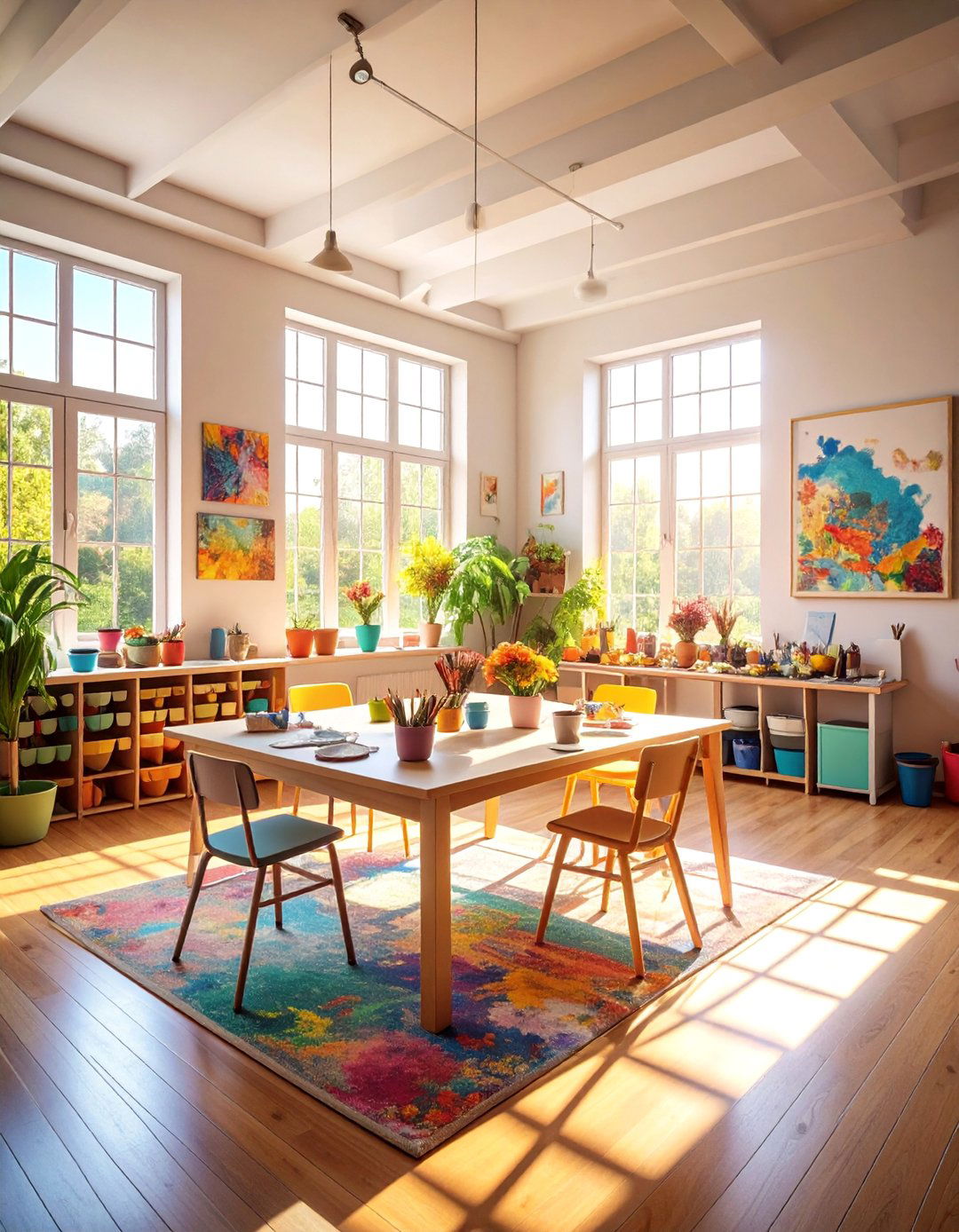
Transform your homeschool space into an artist's studio with dedicated areas for various creative disciplines. A large table covered with washable surfaces accommodates messy art projects, while nearby shelving organizes supplies by medium and color. An easel station provides space for painting and drawing, with a drying rack for completed works. A pottery wheel corner includes clay storage and glazing materials. Good ventilation ensures safety during projects involving fumes or dust. A gallery wall displays rotating student artwork, building confidence and artistic pride. Storage solutions include clear containers for easy supply identification and mobile carts for project flexibility. This creative environment nurtures artistic expression alongside academic learning.
11. Science Laboratory Learning Zone

Design a homeschool room that doubles as a working laboratory with proper equipment and safety features. A central lab table with sinks and storage accommodates experiments and demonstrations. Fume hood ventilation ensures safety during chemical activities, while fireproof cabinets store potentially hazardous materials. Microscope stations enable detailed biological studies, and specimen storage preserves collections for ongoing investigation. A weather station connects to outdoor sensors for meteorological studies. Safety equipment including goggles, aprons, and first aid supplies are easily accessible. Digital scales, pH meters, and other instruments support advanced experimentation. This scientific environment encourages hands-on learning and develops critical thinking skills through direct observation and experimentation.
12. Music and Performance Studio

Create a homeschool room that celebrates musical education with acoustic considerations and performance spaces. Soundproofing materials reduce noise transmission while improving internal acoustics for music practice. Piano placement considers natural light and traffic flow, while storage cubbies house various instruments safely. A small performance area with proper flooring accommodates dance and movement activities. Music stands and sheet music organization support formal music study. Recording equipment enables students to hear their progress and create musical projects. Comfortable seating allows for music appreciation and theory study. This musical environment integrates arts education with traditional academics, supporting creative development and cultural appreciation.
13. Multi-Child Collaborative Workspace
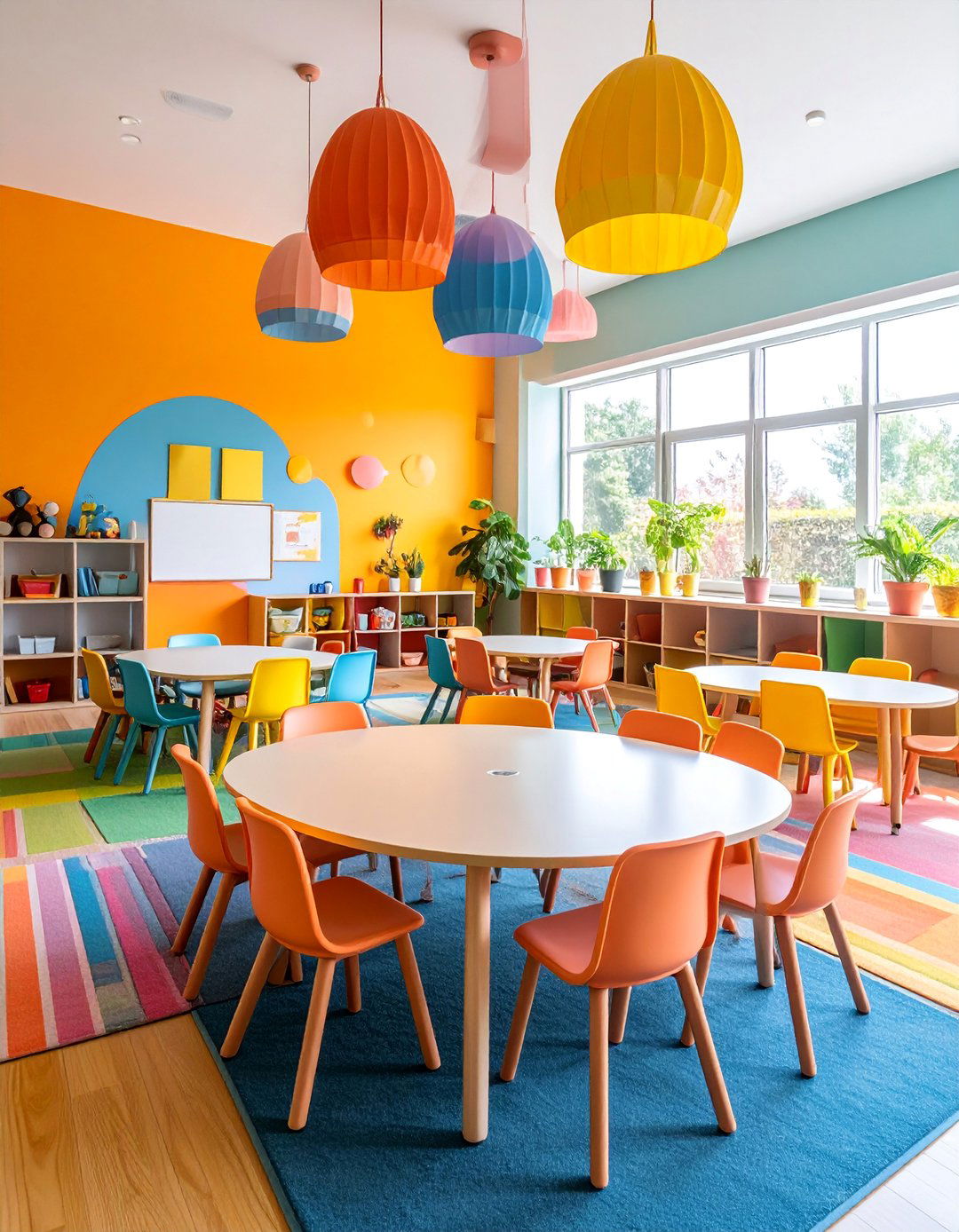
Design a homeschool room that accommodates multiple children with individual and shared learning areas. A large central table encourages collaborative projects while individual desk nooks provide personal workspace. Color-coded storage systems help each child maintain their materials organization. Flexible seating options include various chair heights and styles to accommodate different ages. A presentation area with easel or whiteboard enables children to teach each other. Quiet zones offer retreat space when concentration is needed. Supply stations strategically placed prevent crowding and conflicts. This collaborative environment builds social skills while maintaining individual learning needs and promoting family learning community.
14. Small Space Efficiency Center

Maximize learning potential in limited square footage with clever storage and multi-functional furniture solutions. Wall-mounted fold-down desks save floor space when not in use, while vertical storage systems utilize height effectively. Under-stair learning nooks transform unused space into cozy study areas. Rolling supply carts move easily between small spaces, and stackable furniture stores compactly. Mirror placement creates illusion of larger space while improving natural light distribution. Ceiling-mounted storage keeps materials accessible yet out of the way. Compact organization systems ensure every item has a designated place. This efficient design proves that effective homeschooling requires creativity rather than space, making education accessible in any home size.
15. Seasonal Learning Environment
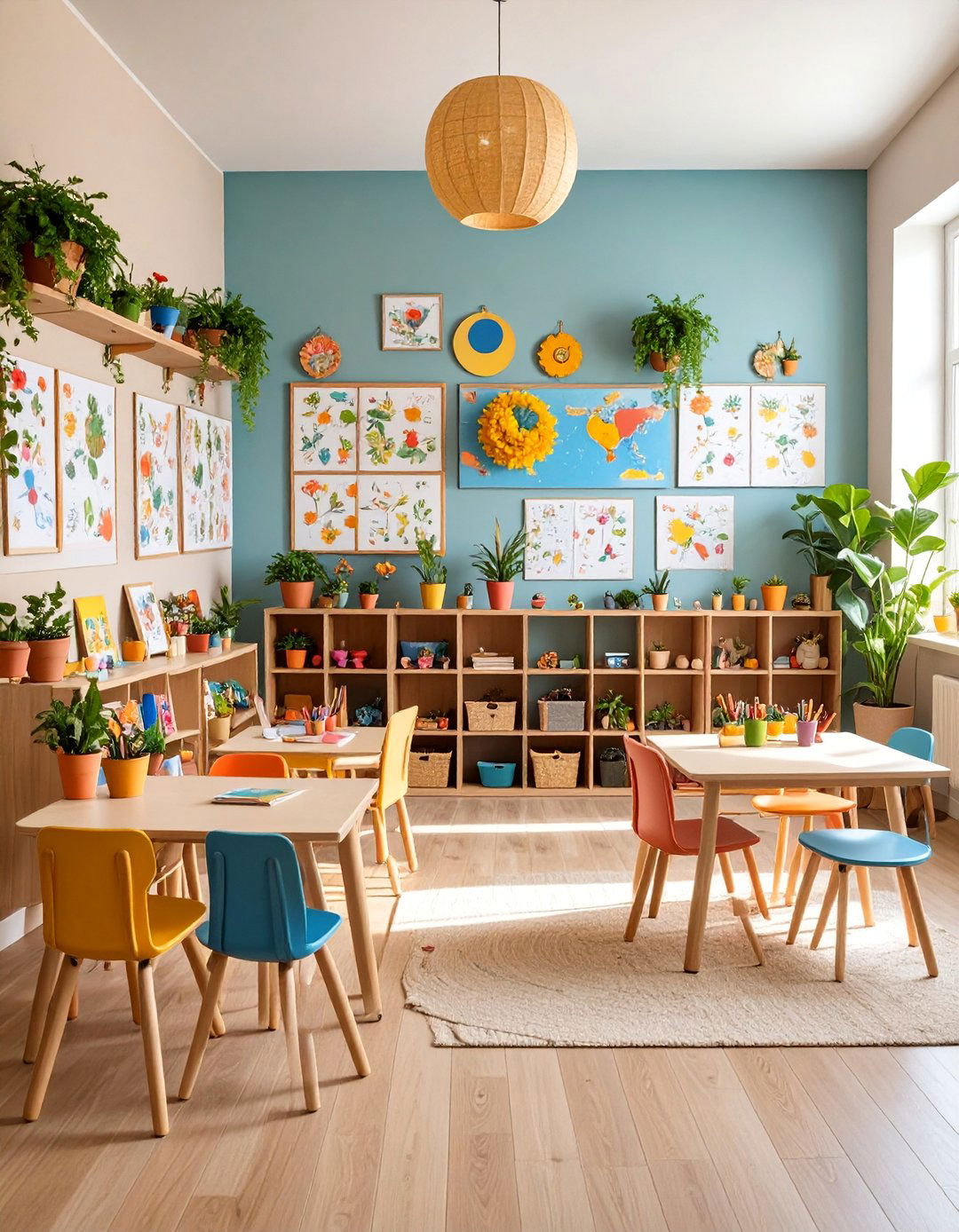
Create a dynamic homeschool room that changes with the seasons, maintaining fresh engagement throughout the year. Interchangeable bulletin board displays showcase seasonal themes and holidays while supporting curriculum connections. Storage systems accommodate rotating decorations and seasonal materials. Plant displays change with growing seasons, teaching botanical concepts naturally. Color schemes shift from warm autumn tones to cool winter palettes. Seasonal activity stations feature appropriate crafts and experiments. Natural light optimization varies with seasonal changes, supplemented by adjustable artificial lighting. Weather tracking stations connect indoor learning with outdoor conditions. This ever-changing environment maintains excitement and relevance while teaching children to observe and appreciate natural cycles and cultural celebrations.
16. Independent Study Sanctuary
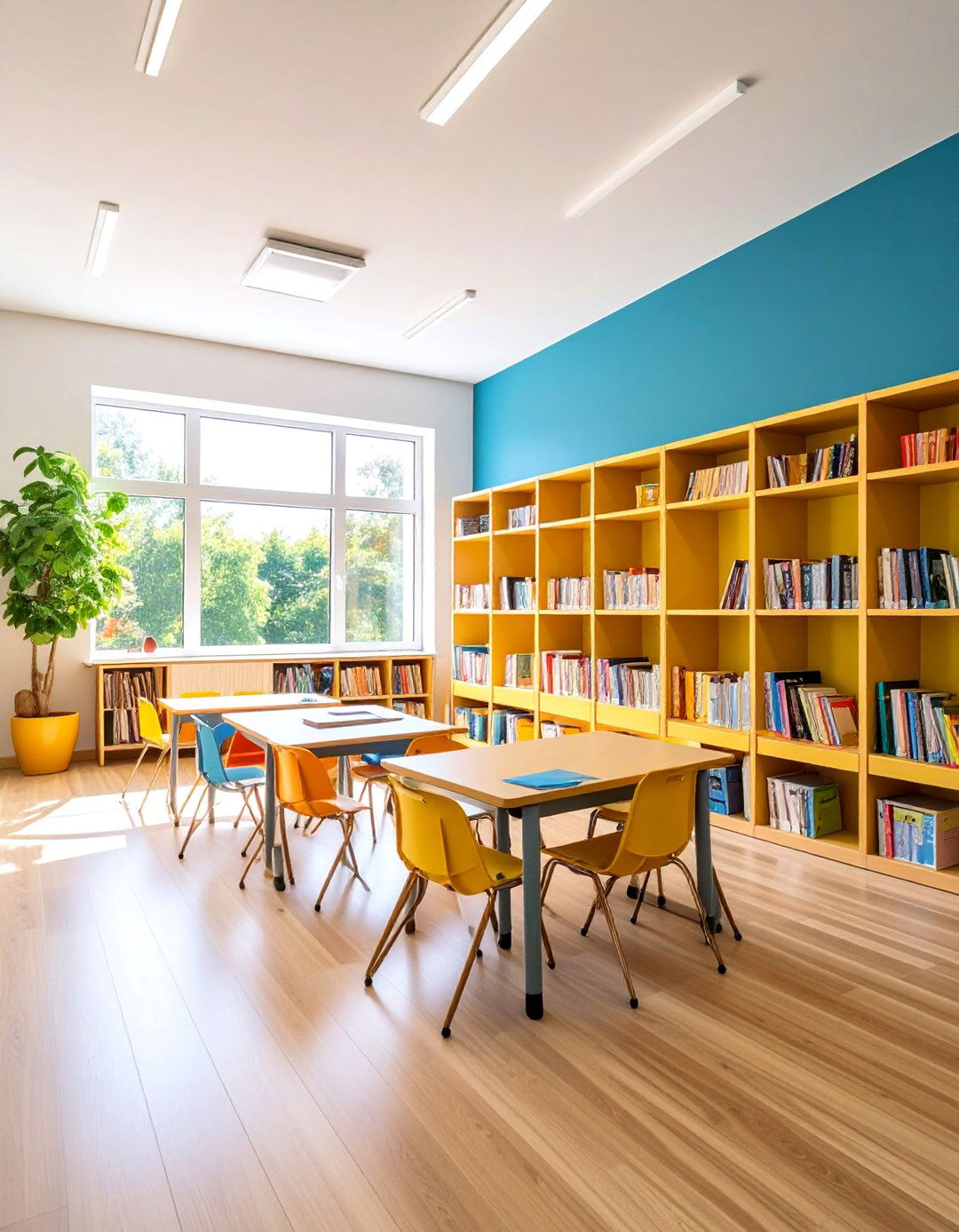
Design a homeschool room specifically for older students requiring independence and focus. Individual study carrels provide privacy and minimize distractions while maintaining supervision possibilities. Reference library areas contain dictionaries, atlases, and subject-specific resources easily accessible for research. Quiet zones feature comfortable seating for extended reading and writing sessions. Technology stations support research and digital assignments while maintaining appropriate boundaries. Organizational systems enable students to manage their own materials and schedules effectively. Presentation practice areas help develop communication skills. This mature learning environment builds self-direction and prepares students for higher education demands while maintaining family learning connections.
17. Sensory-Friendly Learning Space

Create a homeschool room designed for children with sensory sensitivities, incorporating calming elements and sensory tools. Soft lighting options reduce harsh glare while maintaining adequate illumination for academic work. Noise-dampening materials create a quieter learning environment, with quiet zones for sensory breaks. Fidget tools and sensory bins provide appropriate sensory input during learning activities. Weighted blankets and lap pads offer calming pressure when needed. Flexible seating options accommodate different sensory needs and preferences. Organization systems use visual cues and clear labeling for easy navigation. This thoughtfully designed environment supports learning differences while creating an inclusive space where all children can thrive academically and emotionally.
18. Global Cultural Learning Hub

Transform your homeschool room into a window to the world with maps, flags, and cultural artifacts from diverse countries. A large world map anchors one wall while country flags create colorful displays. Cultural artifact displays teach geography and anthropology through hands-on exploration. Language learning stations feature flags, pictures, and basic vocabulary from various countries. A global library contains books from diverse cultures and authors. Time zone clocks help children understand global connections. Pen pal stations facilitate international correspondence and cultural exchange. This multicultural environment broadens perspectives while teaching respect for diversity and global citizenship skills essential for modern world understanding.
19. Literature-Based Learning Library

Design a homeschool room that brings literary classics to life through immersive displays and themed learning areas. Period-appropriate decorations transport students to different historical eras during literature studies. Character costume dress-up areas encourage dramatic interpretation and deeper text engagement. Author study displays feature biographical information and complete works collections. Writing workshops areas provide inspiration and tools for creative writing projects. Book discussion circles with comfortable seating promote literary analysis and critical thinking. Themed learning stations connect literature with history, science, and geography studies. This literary environment fosters deep appreciation for great works while developing critical thinking and communication skills through meaningful text engagement.
20. Hands-On Manipulative Learning Center

Create a homeschool room featuring extensive hands-on learning materials and manipulatives for tactile learners. Math manipulative stations include counting bears, base-ten blocks, and geometric shapes organized in clear containers. Science experiment areas provide materials for exploration and discovery learning. Building stations feature blocks, LEGOs, and engineering challenges to develop spatial skills. Sensory bins contain materials for texture exploration and fine motor development. Art and craft areas support creative expression and fine motor skill development. Storage systems keep manipulatives organized and accessible for independent use. This interactive environment supports kinesthetic learners while making abstract concepts concrete through hands-on exploration and experimentation.
21. Vintage Schoolhouse Charm

Transport your homeschool room back in time with authentic vintage elements and classic educational charm. Antique wooden desks with inkwells create nostalgic atmosphere while providing functional workspace. Chalkboards in ornate frames serve as both teaching tools and decorative elements. Vintage educational posters and charts add historical authenticity while supporting curriculum. Old-fashioned school bells and rulers evoke traditional classroom memories. Vintage books and educational materials create authentic learning resources. Period-appropriate lighting fixtures provide adequate illumination with historical charm. This nostalgic environment connects children with educational history while creating a unique and memorable learning atmosphere that honors traditional teaching methods.
22. Exercise and Movement Integration Room

Design a homeschool room that incorporates physical activity and movement throughout the learning day. Balance balls replace traditional chairs, promoting core strength and focus during seated activities. Standing desks with anti-fatigue mats enable lessons while maintaining physical engagement. Movement break areas feature yoga mats and exercise equipment for planned physical activities. Brain break stations include jumping spots and stretching guides for quick energy release. Kinesthetic learning areas accommodate lessons requiring physical movement and demonstration. Storage for sports equipment encourages active learning games and physical education integration. This active environment recognizes the connection between physical movement and cognitive development while addressing diverse learning styles.
23. Historical Timeline Learning Gallery

Transform your homeschool room into a living history museum with timeline displays and period artifacts. Chronological wall displays trace historical progression from ancient civilizations to modern times. Artifact collection areas feature historical replicas and cultural items for hands-on exploration. Costume areas enable historical role-playing and immersive learning experiences. Map collections show geographical changes throughout different time periods. Biography corners highlight influential historical figures and their contributions. Research stations provide access to historical documents and primary sources. This historical environment makes past events tangible and relevant while developing chronological thinking skills and historical empathy through engaging, multimedia approaches to learning.
24. STEM Innovation Workshop

Create a homeschool room focused on science, technology, engineering, and mathematics with dedicated areas for each discipline. Engineering challenge stations provide building materials and problem-solving opportunities. Computer programming areas feature age-appropriate coding resources and software. Mathematics manipulation stations include calculators, measuring tools, and geometric models. Science experiment areas provide materials for hypothesis testing and discovery. Robotics stations enable hands-on technology learning and programming practice. Innovation spaces encourage invention and creative problem-solving. Safety equipment ensures secure experimentation and building activities. This STEM-focused environment prepares students for future careers while developing critical thinking and problem-solving skills essential for technological success.
25. Family Learning Community Circle
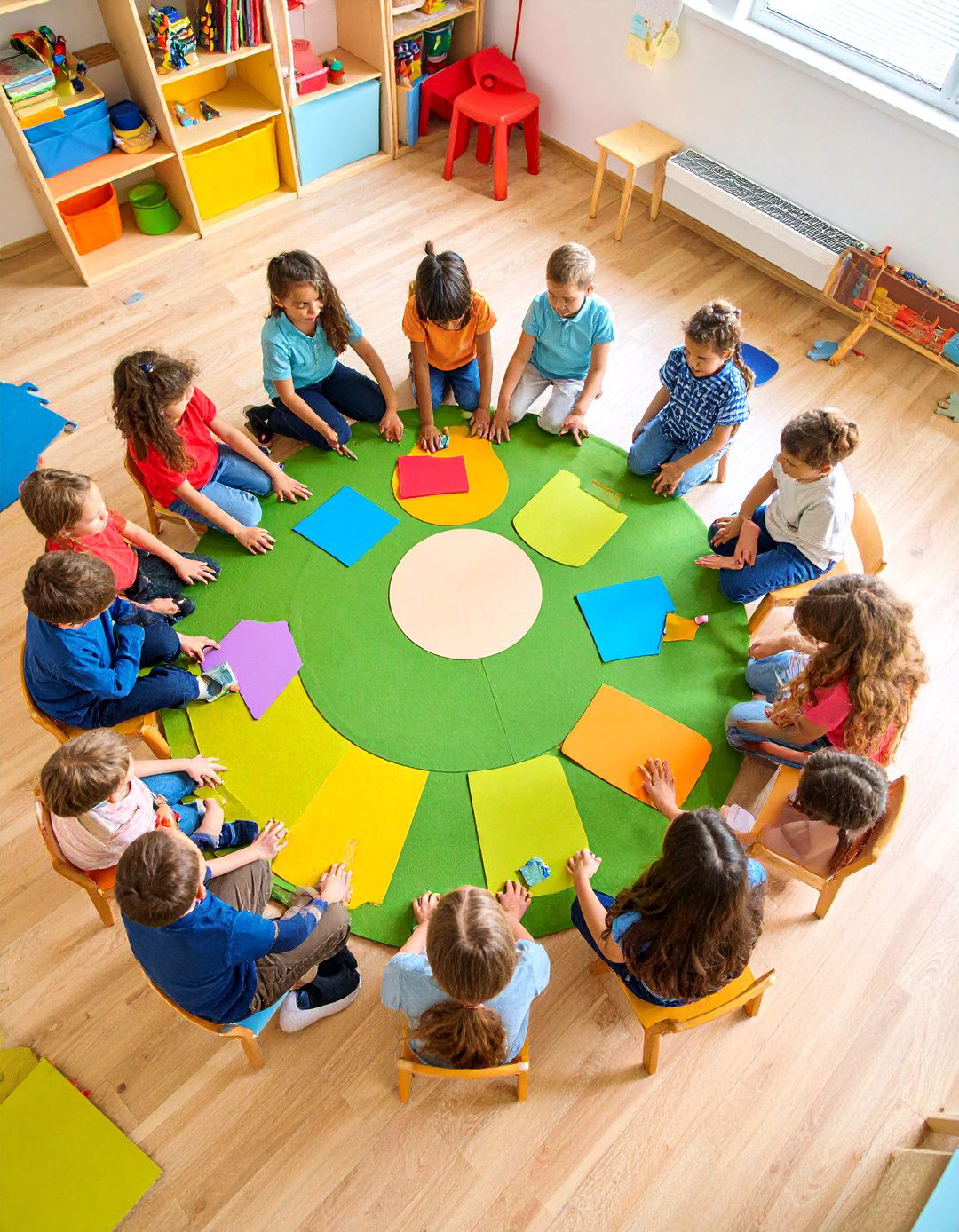
Design a homeschool room that emphasizes family learning and community with flexible gathering spaces and shared experiences. Large circular seating arrangements facilitate family discussions and collaborative learning. Multi-generational learning areas accommodate parents and children learning together. Sharing circles promote oral communication and presentation skills development. Game areas feature educational games and family learning activities. Community project spaces enable family service learning and collaborative efforts. Celebration areas showcase family achievements and learning milestones. Storage accommodates family learning materials and shared resources. This community-focused environment strengthens family bonds while creating positive learning associations that last a lifetime and build family culture around education.
Conclusion:
These 25 homeschool room designs demonstrate that effective learning environments can be created in any space, regardless of size or budget. From minimalist studios to elaborate themed rooms, each concept addresses specific learning needs while maintaining functionality and appeal. The key lies in understanding your family's unique requirements and adapting these ideas accordingly. Remember that the most successful homeschool rooms evolve with your children's growth and changing educational needs. Start with basic elements and gradually incorporate additional features as you discover what works best for your family's learning journey.


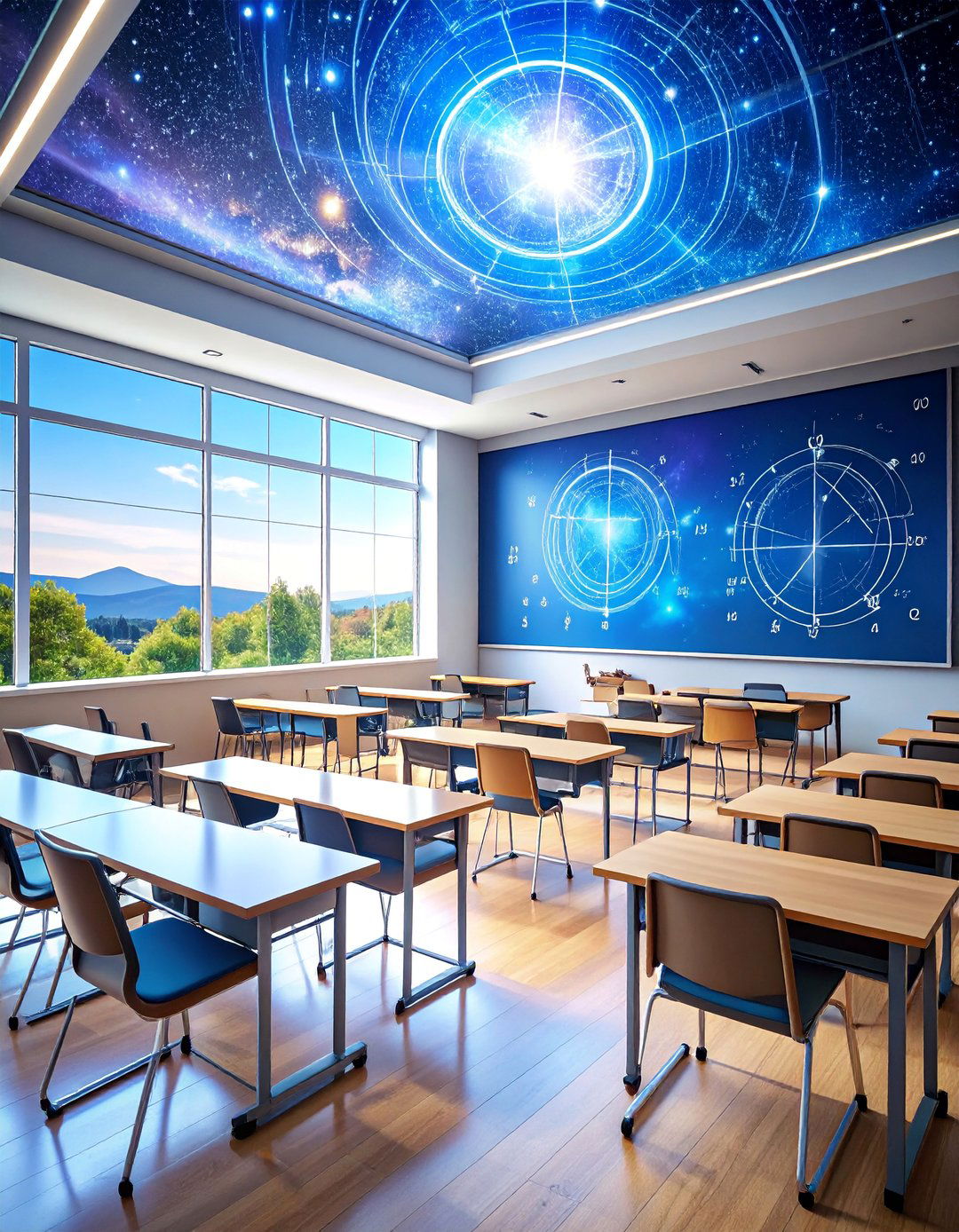



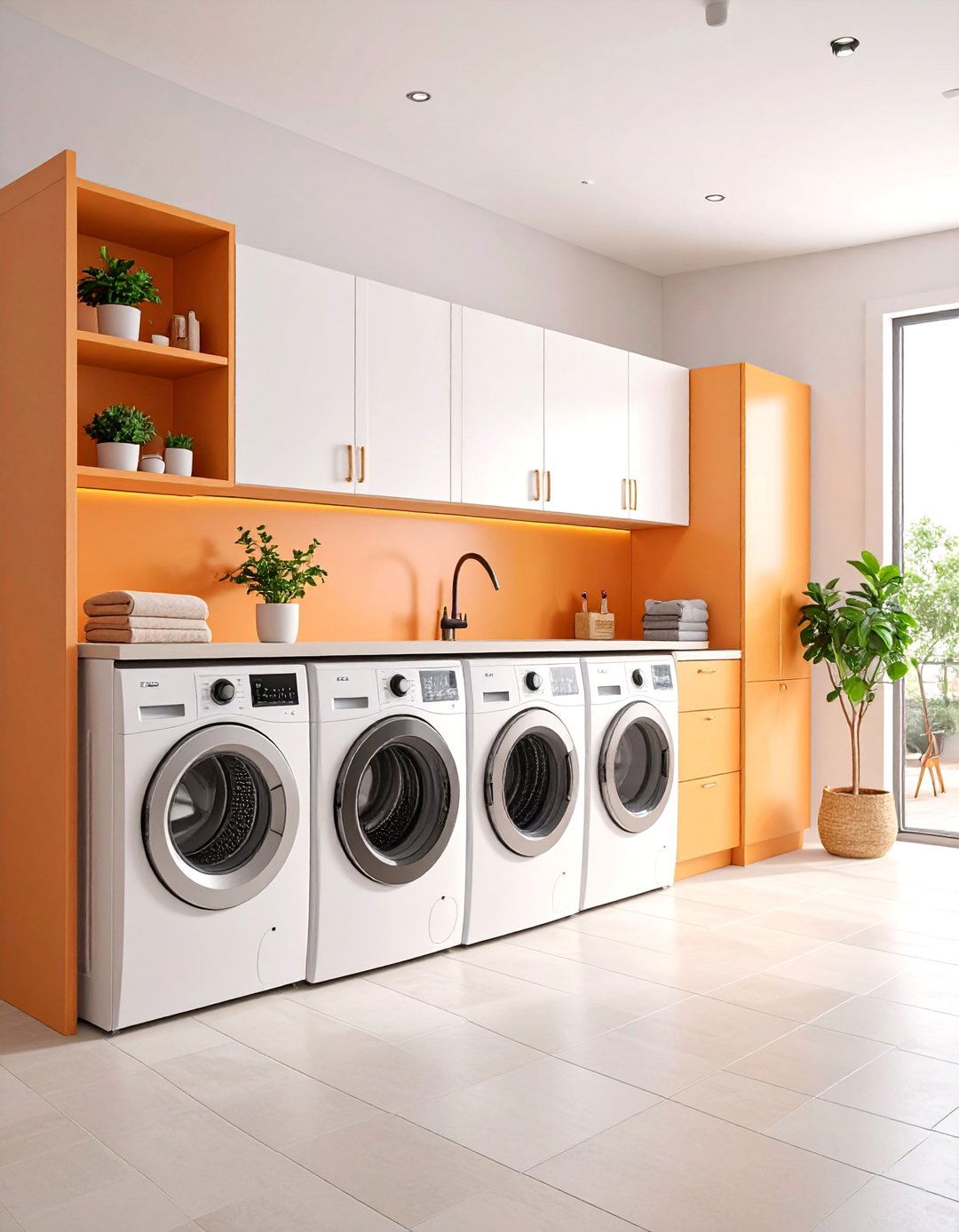
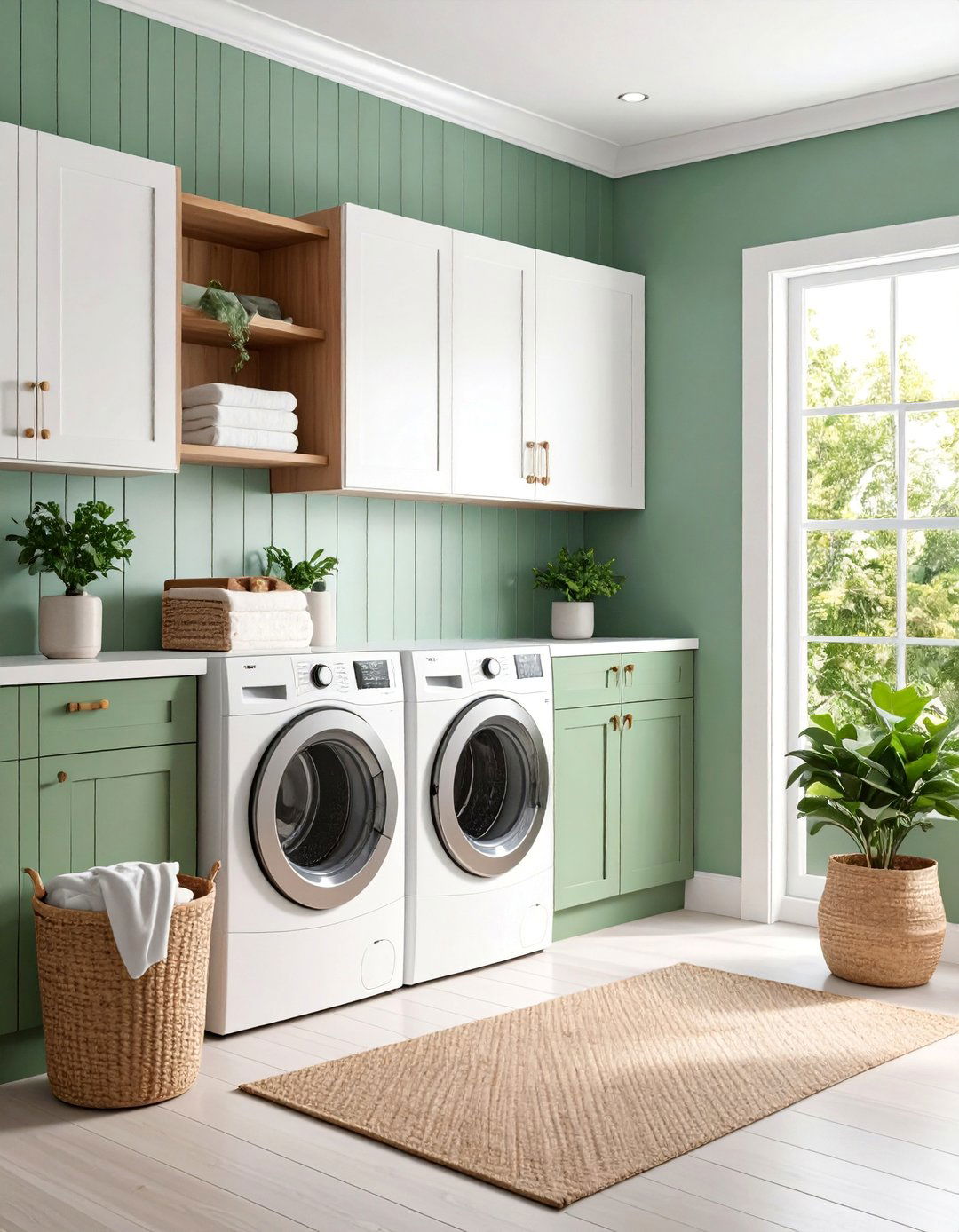

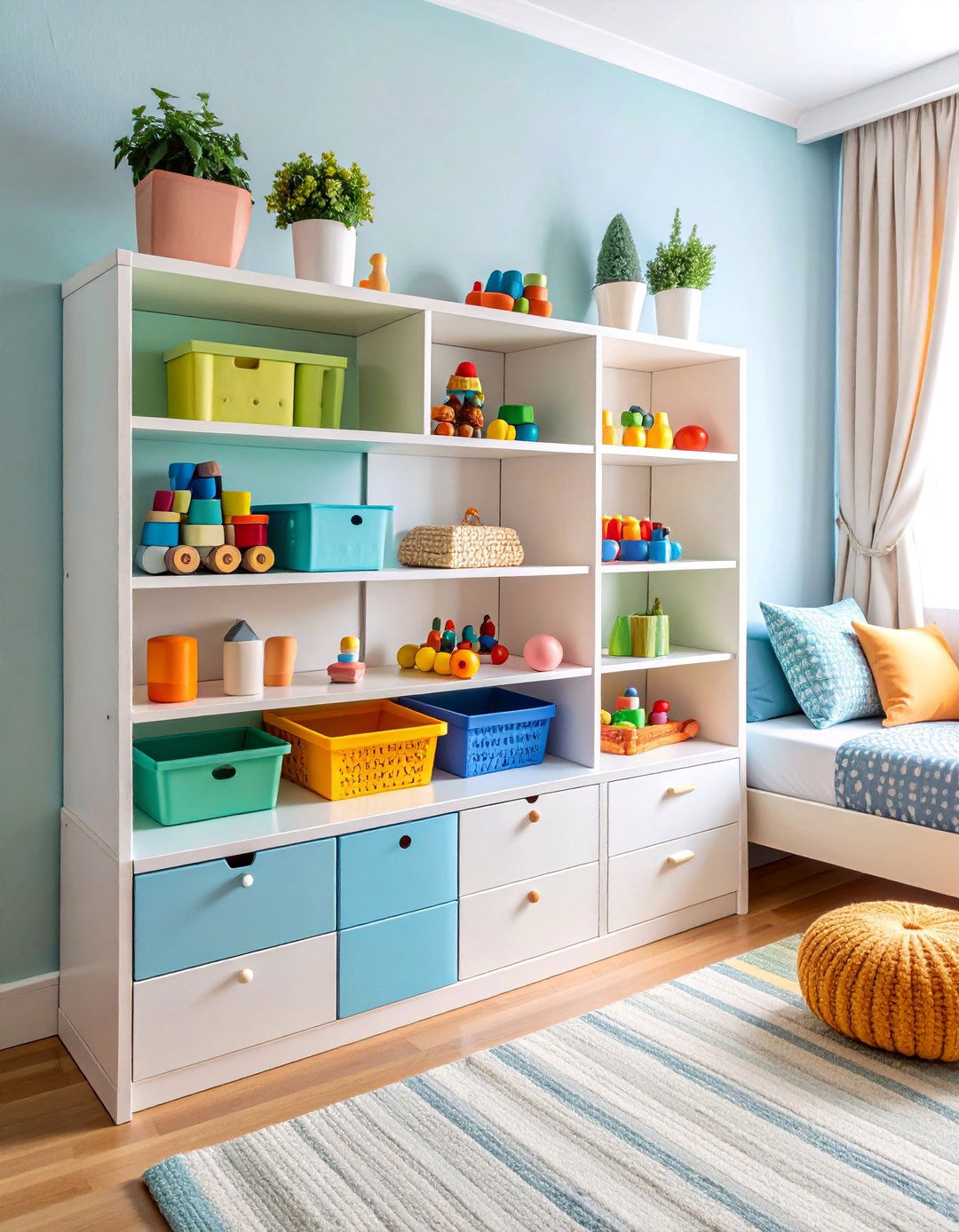

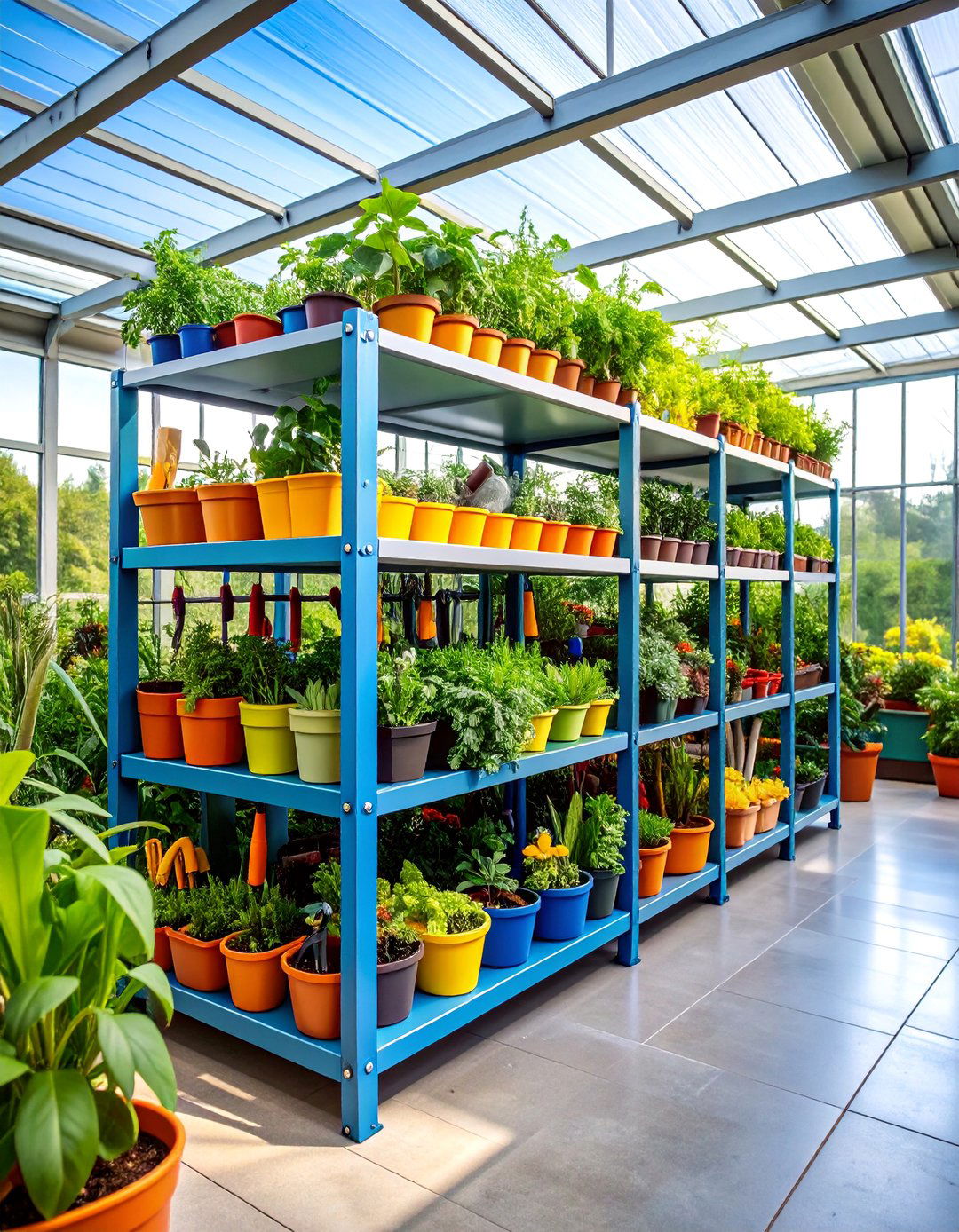

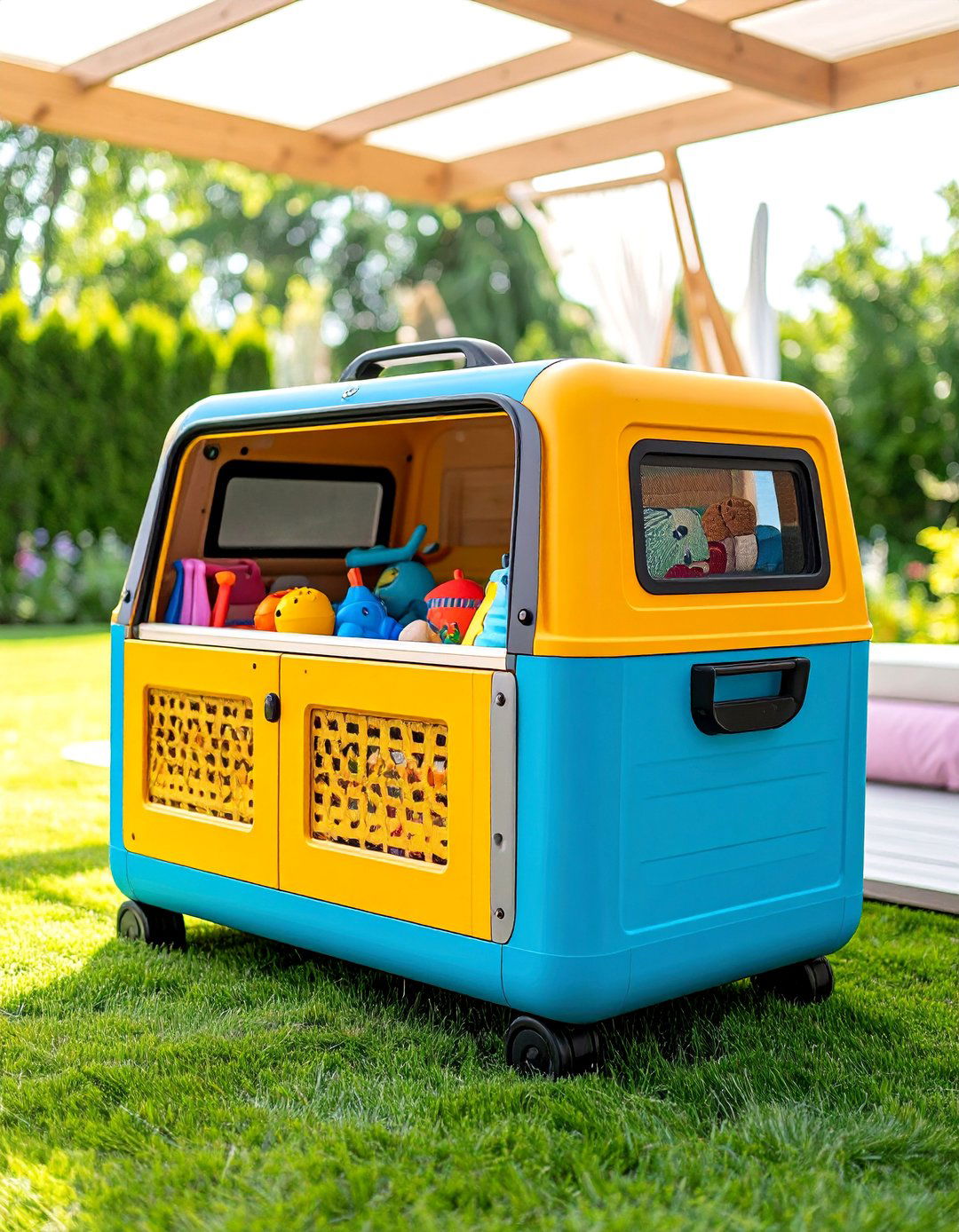

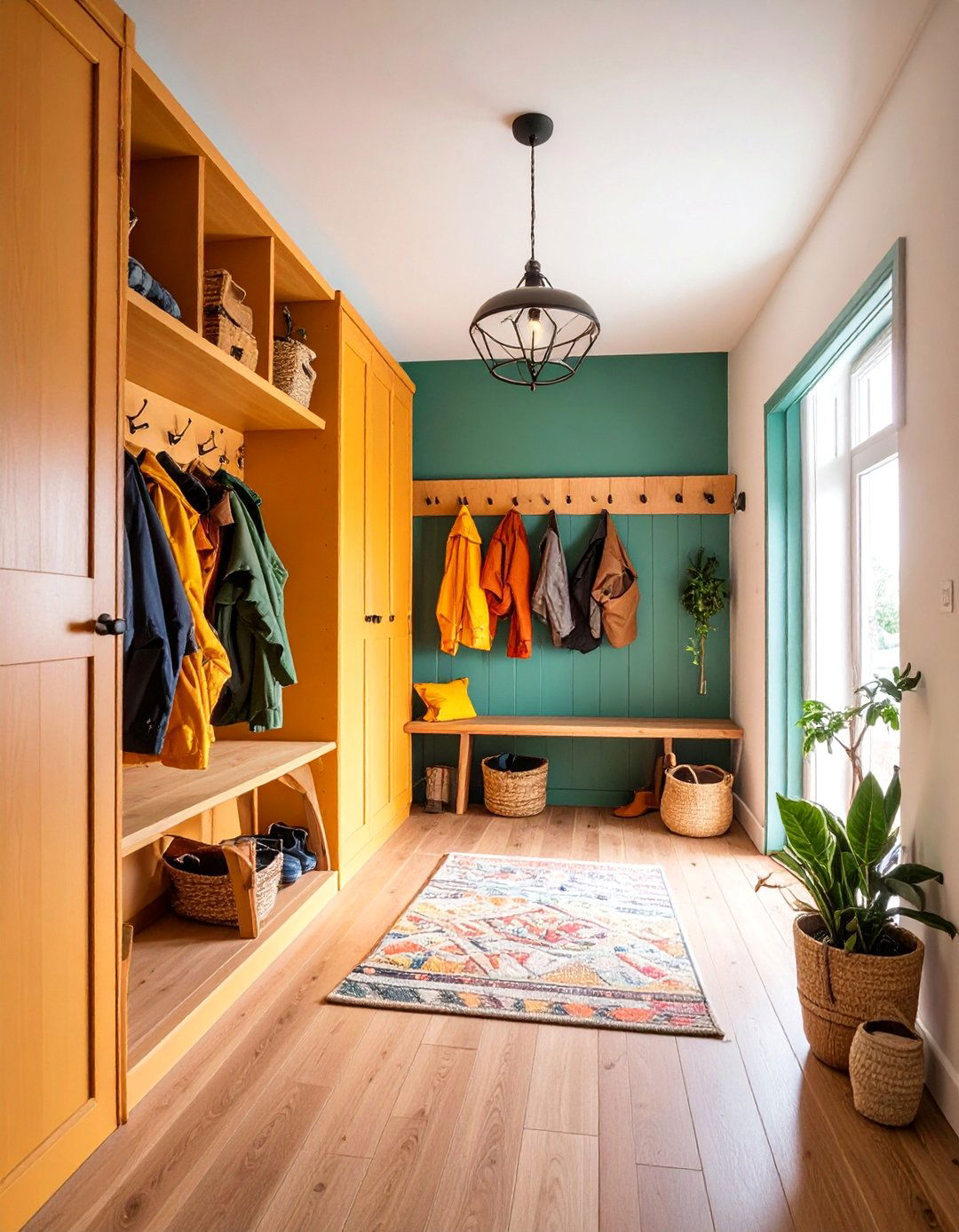
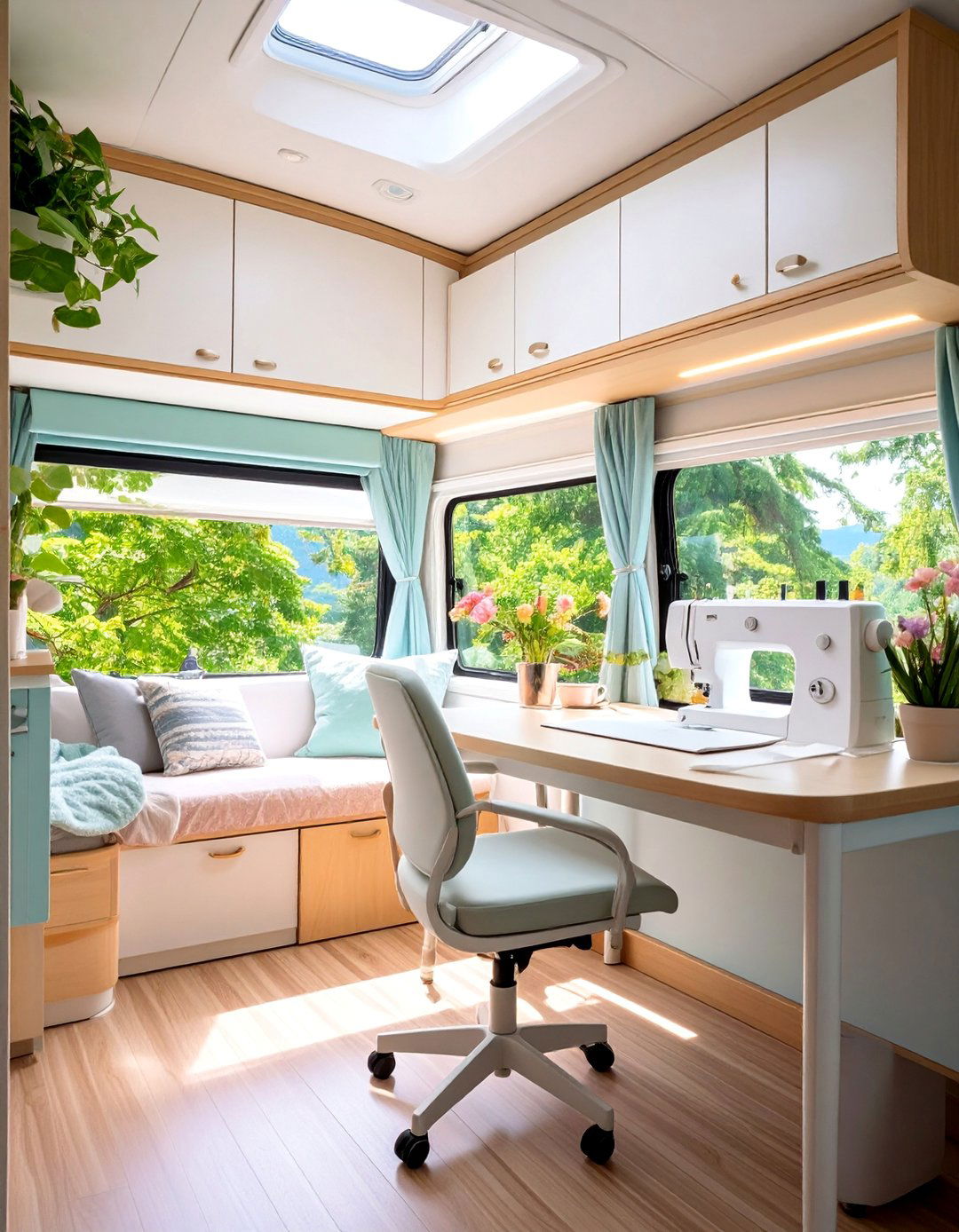
Leave a Reply